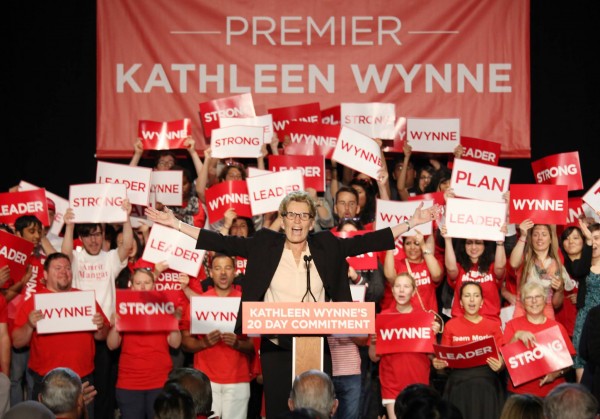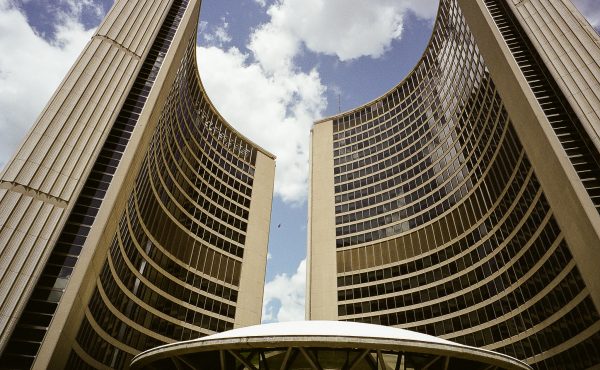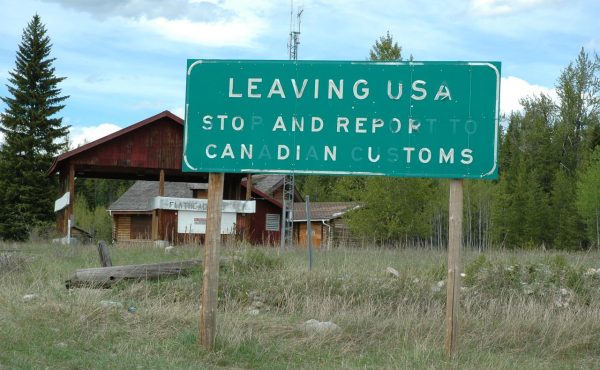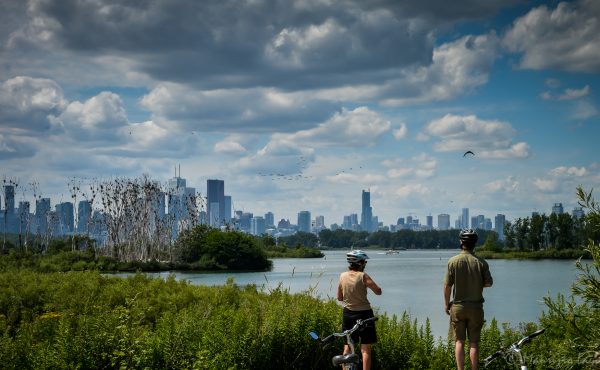With premier Kathleen Wynne promising to move quickly to deliver a throne speech, re-introduce the budget that won her last week’s election and appoint a new cabinet, she’s got a superb opportunity to re-build the Liberals’ tattered credibility on the public transit file, which, if we are to believe her campaign rhetoric, will be a central focus of her government’s program.
From where I sit, Wynne can choose to make three moves that would go some distance to proving that the Liberals are genuine about tackling gridlock:
- shuffle Glen Murray out of transportation and infrastructure and give the portfolio to a steady, experienced minister;
- move swiftly to reform the governance of Metrolinx with legislation that adds elected municipal officials from across the GTHA to the board;
- enter into negotiations with the two other parties to adopt a tamper proof financial oversight system for the $29 billion transportation trust fund.
A NEW MINISTER
I’m not naïve about political IOUs: Wynne put Murray in the transportation/infrastructure portfolio last year because he staunchly supported her leadership bid.
In the immediate aftermath, as we detailed in this space last month, Murray conducted himself like a runaway train, although he did have the tacit permission of the premier’s office. The record shows he was shooting from the hip for much of the Scarborough subway fight. More problematically, he ignored the expert technical advice offered up by his officials, both inside the ministry and at Metrolinx.
Going forward, the Liberals will have a dedicated pot of money, as well as access to billions of dollars from the new federal infrastructure pot. And Metrolinx is deep into the future planning and execution of several major Big Move projects.
The most generous interpretation of Murray’s contribution is that he did the political dirty work for Wynne. But we don’t need that skill set any longer. If she wants to demonstrate seriousness, she’s got to find someone credible for that portfolio.
A NEW GOVERNANCE MODEL
No one should forget that Wynne’s political career began with a 1997 campaign to force Queen’s Park to recognize the legitimacy and importance of local (i.e., municipal) democracy. I’d like to see those principles (re)applied to Metrolinx’s governance. When the Liberals established the agency in 2006, the board included municipal politicians. That group, led by former Burlington mayor Rob McIsaac, hashed out and then approved the Big Move. Then, the Liberals decided to turf the elected officials in favour of a board of worthies, led by a political appointee (former University of Toronto president Rob Prichard).
Wynne’s government should initiate a review of the Metrolinx governance model, and introduce changes within 12 months. In coming years, this agency’s work will have a profound impact on local/regional planning in the GTHA, so it makes no sense to me that local/regional officials aren’t directly involved in the process of approving its work plan. The process of hashing out investment priorities and seeking regional consensus on multi-billion-dollar projects confers legitimacy and stability on Metrolinx’s work; it is a feature, not a bug.
In my view, the chair ought to be elected by the members, while the board composition should be linked to population and ridership. The new board need not be all politicians, by the way. Some regional transit agencies (e.g. New York’s MTA) have boards comprised of directors who represent constituencies, as well as local government entities. The point is that the way to fortify Metrolinx, and to institutionalize its role in the region’s future, is to weave the agency’s governance directly into the governance of the region. It’s not complicated.
A TOUGH NEW ACCOUNTABILITY FRAMEWORK FOR THE TRANSIT TRUST FUND
If Wynne thinks Ontarians in general, and the opposition parties in particular, have forgotten about gas plants and Ornge and all the other money sinks from the previous regime, she’s wrong.Over 60% of the province’s voters chose other parties, so Wynne’s got to go that much further to prove that her government won’t make those mistakes again.
On the transit file, which remains intensely politicized and extraordinarily expensive, it is particularly crucial that residents know the funds have been spent responsibly, effectively and in accordance with Metrolinx’s approved plans.
Given the dollars involved, I’d argue that the oversight should be delegated to an institution that is above politics: the Ontario auditor-general. There’s nothing to stop Wynne from passing legislation mandating the Ontario AG to conduct a thorough “value-for-money” audit of Metrolinx’s spending every three years until the Big Move has been fully implemented. (Brian Mulroney’s government made a similar move with federal sustainability programs in the late 1980s.) With the results reported to the legislature, Metrolinx would be obliged to comply with the recommendations of such an independent review.
I’m not trying to suggest that Metrolinx is a morass of misspending (it’s not). Rather, I’d argue that if Wynne actually wants to tackle gridlock in Canada’s most populous and economically important urban region, she should be setting the accountability bar as high as she possibly can. Why? That’s an easy one: to take transit investment off the table as a future source of scandal-mongering.






5 comments
Excellent points, John.
I agree that Murray went rogue far too often. Unfortunately it would be hard to find a minister who could bring up the same level of enthusiasm for transit that Murray did. Perhaps the solution there is to take away one of the portfolios he holds and get someone else in there as a moderating influence…so long as that person is not Mitzie Hunter (too much baggage).
The interesting detail about changing the composition of the Metrolinx board is that they also acknowledge there is a need to do so. My personal preference has been a mix of industry appointees and local/regional representatives (one representative from the Cities of Toronto and Hamilton, as well as regional chairs/representatives from York, Halton, Peel and Durham).
The challenge with any board is going to be the relationship to Toronto, given that it has less than 50% of the population of the GTHA but the TTC carries approximately 80% of transit users. The other challenge I’d including the other regions/counties that have links to Metrolinx. Currently GO buses head up to Orangeville, Niagara and Peterborough and trains and buses run up to Barrie, Guelph and Kitchener-Waterloo. There is talk about GO buses to Brantford.
Perhaps the solution is to carve out the zone around Hamilton and create a Metrolinx West serving Hamilton, Niagara Region, Waterloo Region and Wellington and Brant Counties.
As for the Dedicated Transit Fund…the level of transparency on transit spending in general and the fund in particular will either make or break Wynne’s time period as the elected premier of Ontario. Voters seem to have showed that despite everything done in the previous administration, there are still unfinished efforts to build the province’s infrastructure and these need to continue.
Cheers, Moaz
@Moaz: At this point, I’d argue that ministerial enthusiasm, at this juncture, is neither here nor there. What we need is rational decision-making, based on evidence, financial probity, and planning rationale. As well as someone with the administrative chops to see through complicated projects without turning them into controversies or gong shows. Murray is most assuredly NOT that guy.
With respect to governance council, shouldnt local interests be represented by people like Jen Keesmat instead of politicians?
While Murray is pro-transit, his freelancing and impractical ideas could be as damaging as Hudak’s auto-oriented transit planning.
There are some excellent points here: things are a mess, but we also have some issues again with doing the less-right to wrong things that are quite costly/blighting.
While the spacing series on Scarborough really should be required reading for anyone serious about transit, and Mr. Murray may well have shot from the hip unlike everyone else, Murray at least truly gets the crappy biking aspects of TO/Caronto – which is very very nice for a change.
http://www.youtube.com/watch?v=74RgyohPyjQ&feature=youtu.be
What is really really needed goes beyond the recognition of car dominance and congestion to an honest accounting of how much total costs from automobility we have – Vancouver estimated an annual avoided cost/subsidy of $2700 each per year – and that’s Big Money. And then – the Big Thing is getting the political will to push back on these private conveyances perhaps to save as big as Curitiba did when they opted for a busway system vs. subway and ended up with about the same capacity as a subway, but for 1% of the cost.
So far, soo many of our politicians and institutions are devoid of honest appraisals of the issue, or more likely, completely cave to the car interests as seen by Ms. Chow the other day when she said she wouldn’t support re-introducing a Vehicle Registration Tax. Also, the car-using suburbs have greater numbers of politicians and it is unusual for privilege to readily vote to deny itself subsidy and privilege. Being careful about what is sought for governance reform is thus wise.